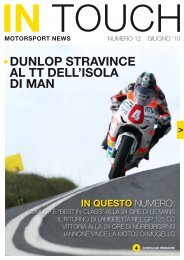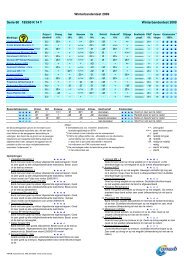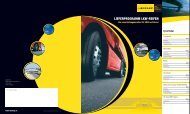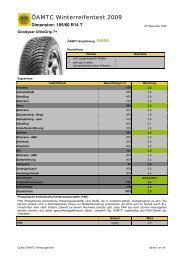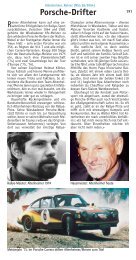2012 - Dunlop
2012 - Dunlop
2012 - Dunlop
You also want an ePaper? Increase the reach of your titles
YUMPU automatically turns print PDFs into web optimized ePapers that Google loves.
8 9<br />
DuNLOp TYRE TECHNOLOGY<br />
nTEc<br />
Riders talk about ‘the edge’. At trackdays, the edge is the difference<br />
between an everyday ride and a truly memorable experience.<br />
<strong>Dunlop</strong>’s ingenious NTEC pressure-adjust system provides that edge.<br />
NTEC Technology allows the rider to optimise the tyre by adjusting<br />
inflation pressure. For dry track days, deflating the NTEC tyre will<br />
deliver predictable and tenacious handling on the limit. Back on<br />
the road, re-inflating to the manufacturer’s recommended pressures<br />
will reward the rider with class-leading levels of grip and performance.<br />
If you’re interested in lowering your track times without<br />
compromising your road safety – and without buying two sets<br />
of tyres – NTEC is almost certainly the most cost-effective option.<br />
MulTi-TrEad (MT)<br />
TEchnOlOGY<br />
Multi-Tread (MT) Technology<br />
is one of our latest innovations.<br />
Years of success in global<br />
Superbike, Endurance and GP<br />
championships have resulted<br />
in the development of a pioneering<br />
multi-compound, which is<br />
transferred to many of our current<br />
Sportmax track and road products.<br />
The central traction compound<br />
contacts the road when the<br />
motorcycle is upright. It uses<br />
a tougher, cooler-running<br />
compound that maintains<br />
straight-line stability, traction,<br />
braking and longer tread life.<br />
The lateral compound contacts<br />
the road when the motorcycle<br />
is leaned over. It incorporates<br />
a rubber compound, which is<br />
developed specifically to enhance<br />
grip at maximum lean angles.<br />
JOinTlEss BElT<br />
cOnsTrucTiOn<br />
All our Sportmax street tyres are<br />
designed using a combination<br />
of Computer Aided Design<br />
(CAD) technology and Finite<br />
Element Analysis (FEA) as<br />
well as JointLess Belt (JLB)<br />
construction (either front<br />
or rear).<br />
The use of JLB construction<br />
eliminates the belt overlaps that<br />
can be found in some tyres,<br />
resulting in smoother handling.<br />
This type of construction also<br />
minimises dynamic growth of<br />
the tyre profile at high speeds,<br />
maintains a stable contact<br />
patch and reduces distortion<br />
and excessive heat build-up.








